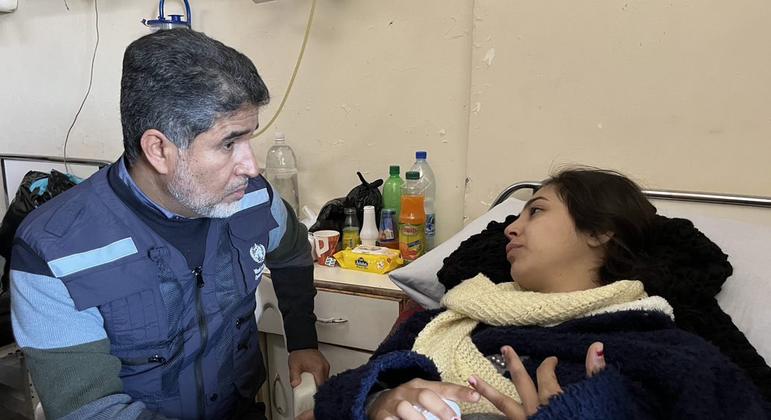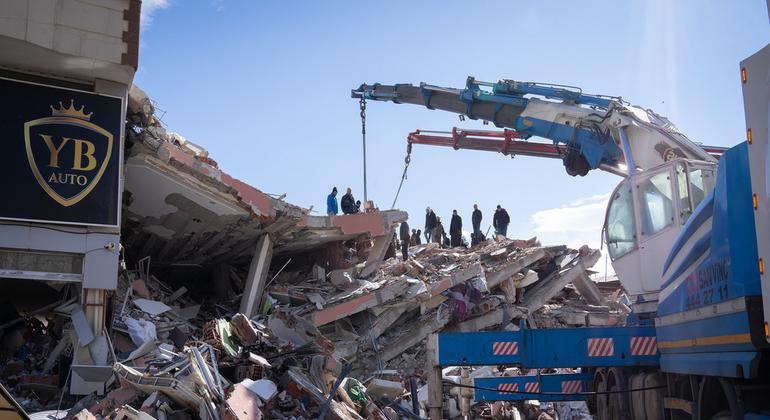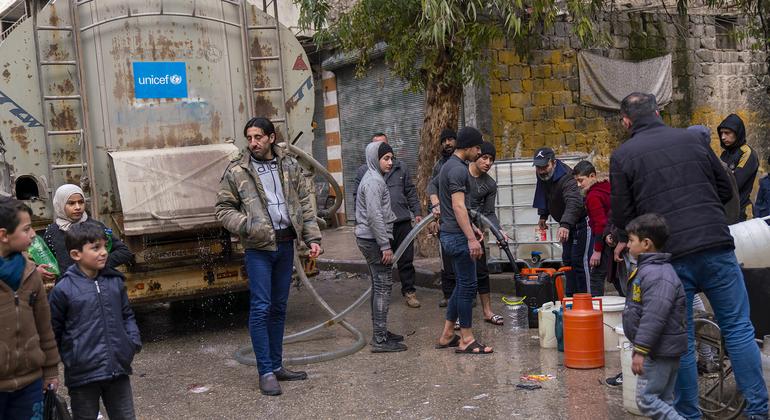The devastating impact of 12 years of civil war has been compounded by the 6 February earthquake which has left tens of thousands of people dead and millions more in need of support on both sides of the border between Syria and Türkiye.
WHO’s Regional Director for the Eastern Mediterranean Region, Dr. Ahmed Al Mandhari, was just in the historic city of Aleppo, in Syria.
“The destruction is massive and the devastation is indescribable.
The earthquake hit at a time when needs across Syria are at their highest since the conflict began 12 years back. For example, almost 50 per cent of the country’s healthcare facilities are not functioning because of the war and now more crucial medical equipment has been destroyed by the earthquake.
Many health care staff had already left because of the war and those who stayed have struggled to carry out their work.

We estimate that around 25 million people have been impacted by the earthquake in the whole of Syria. In Aleppo, for example, initial estimates of the numbers indicate that more than 200,000 people are now homeless. We have met many of them. We have visited many of these damaged areas and we have seen people living, outside in very cold weather.
In fact, a family of 16 was living in one tent. We have seen families packed into stadiums, families in shelters and in very small rooms.
Negotiation with Syrian authorities
WHO and other UN agencies have been on the ground from day one. We managed to provide supplies to 16 hospitals in northwestern Syria through our NGO partners.
Two days ago, we provided a shipment of 35 metric tonnes of trauma kits and other medical supplies for infections. We will be sending more from our supply hub in Dubai.
We mobilized our teams to go and work with their counterparts in the ministries of health and the healthcare facilities.
We have been negotiating with the authorities in the Government-controlled areas to make sure that the supplies are fairly distributed to the healthcare facilities and to get cross-border access to the earthquake-affected areas.
Fuel crisis
Another significant challenge is the ongoing fuel crisis that is affecting everyone. Hospitals, which rely on generators, are suffering because they are unable to provide heat; the lack electricity makes it difficult for these hospitals to function properly.
We are also facing a higher risk of the spread of water and foodborne diseases due to the disrupted water supply; last year we had a cholera outbreak because of contaminated water.
The other risk is the spread of hepatitis, due to contaminated water and food supplies.

And we are concerned about the transmission of diseases in crowded shelters. We visited one of the stadiums which is full of families, and doctors there told us that children are complaining of head lice.
Head lice started to spread among the families there because it is very, very packed.
I’m very worried about the harsh winter weather with extremely cold temperatures. There are people living outside in tents which are not heated. I met an old lady and I saw her hands are cracked with bruises and when I touched her hand it was very dry because of the cold weather and the lack of warmth.
Losing future generations
This earthquake led to an additional crisis for Syrians, regardless of where they are located, whether in the Government controlled areas or in the non-Government controlled areas.
Syrians are the same wherever they are, and they cannot tolerate more shocks and crisis. We should really stand strong and say enough is enough.
We cannot as human beings, tolerate Syrians suffering multiple crises and losing lives. We are losing children. We are losing the future generation of Syria, as I said, regardless of where they’re located.
So let us let us bring the attention of the global community and make sure that we really participate in saving the lives of all Syrians.
With no political, religious, cultural, societal, economic affiliations, you know human beings are the same regardless of where they live.”



